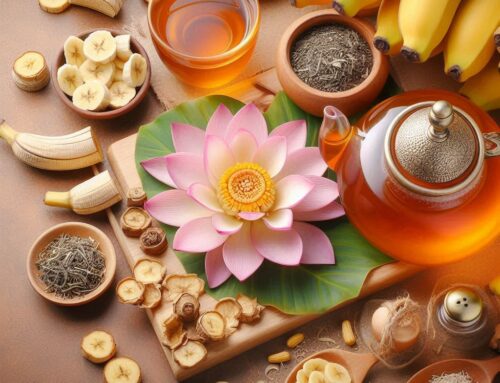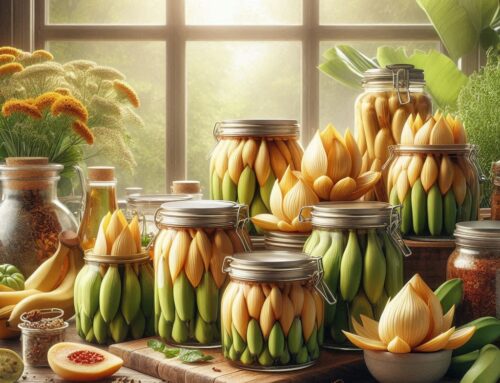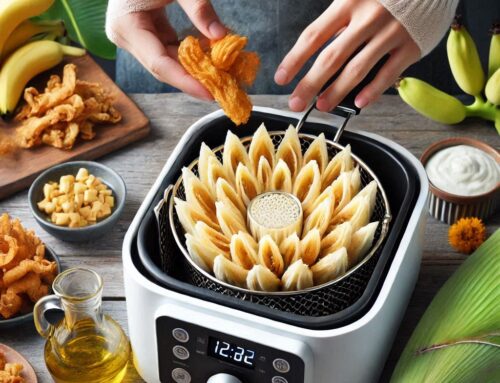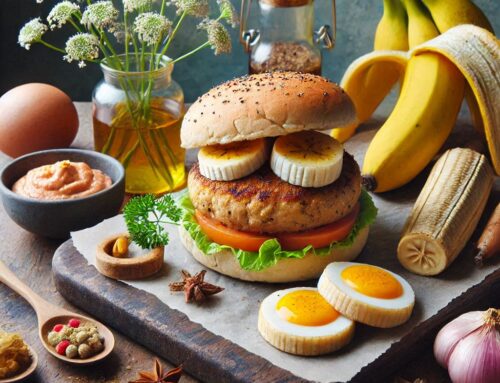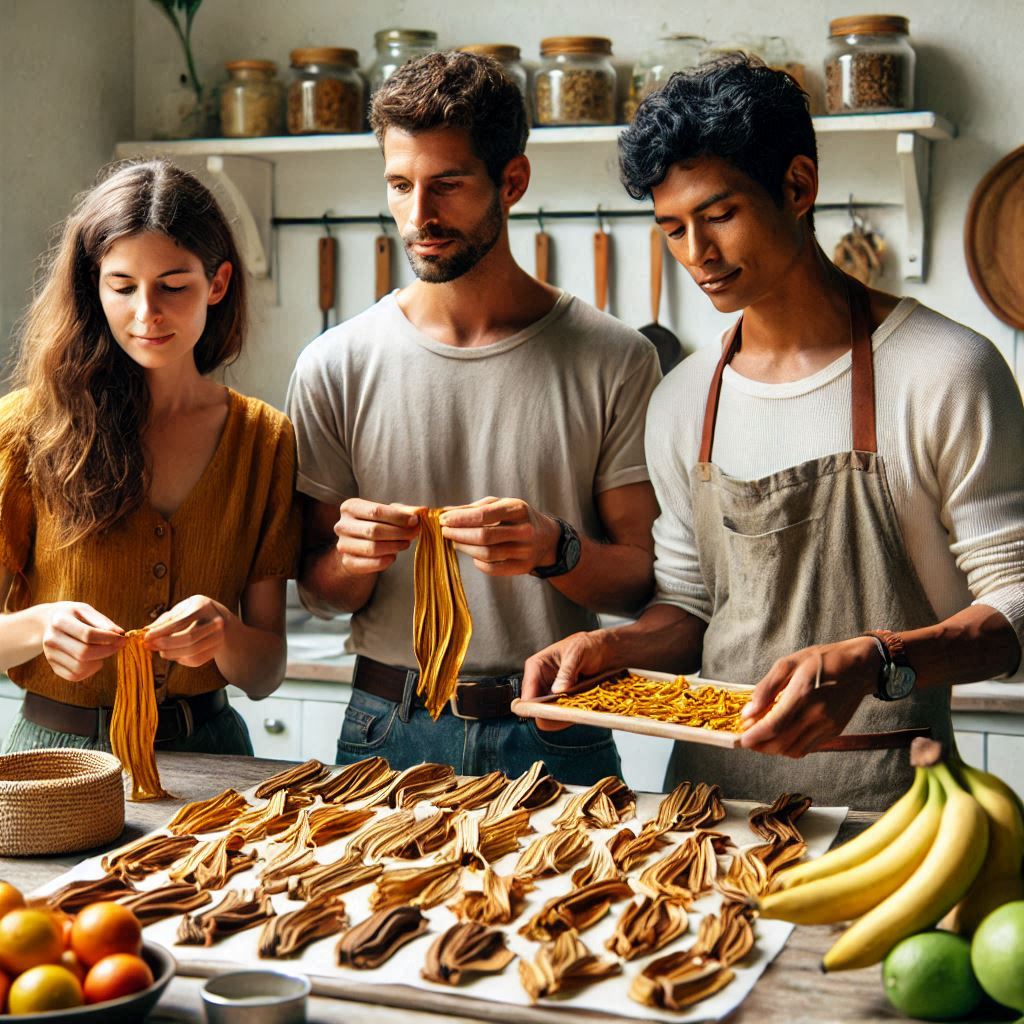
Introduction: The Benefits and Uses of Dried Banana Blossom
Dried banana blossom, often hailed as a versatile vegan cooking ingredient, has been gaining popularity due to its impressive nutritional value and myriad health benefits. As a nutrient-rich food, dried banana blossom is packed with essential vitamins and minerals such as vitamin E, magnesium, and iron. These nutrients contribute to a host of health benefits, including improved digestion, enhanced immune function, and better cardiovascular health.
One of the standout features of dried banana blossom is its high fiber content. This makes it an excellent choice for those looking to promote digestive health and maintain a healthy weight. Additionally, it serves as an ideal meat substitute in vegan dishes due to its texture and ability to absorb flavors well.
In terms of culinary uses, dried banana blossom can be incorporated into a wide range of dishes. It can be rehydrated and used in curries, salads, stir-fries, or even battered and fried for a delicious plant-based alternative to fish. Its versatility makes it an exciting addition to any kitchen seeking innovative ways to enjoy plant-based meals while reaping the numerous health benefits it offers.
Preparing Banana Blossoms for Dehydration: What You Need to Know
Preparing banana blossoms for dehydration involves several crucial steps to ensure the final product is both delicious and long-lasting. The first step in preparing banana blossoms is cleaning them thoroughly. Begin by peeling away the tough outer layers of the blossom until you reach the tender inner petals. These outer layers are often too fibrous and should be discarded.
Once you’ve exposed the inner petals, rinse them under cold water to remove any dirt or insects that might be present. Cleaning banana flowers is essential to maintain hygiene and enhance their natural flavors during dehydration.
Next, focus on trimming techniques. Use a sharp knife to cut off the stem and any remaining tough parts of the blossom. It’s important to also remove the stamen from each petal, as it can impart a bitter taste if left intact.
Before proceeding with dehydration, consider soaking the cleaned and trimmed banana blossoms in a solution of water mixed with lemon juice or vinegar for about 15 minutes. This pre-dehydration step helps prevent discoloration and enhances their flavor profile.
By following these steps meticulously, you prepare your banana blossoms effectively for dehydration, ensuring they retain their nutritional benefits while achieving an appealing texture and taste when dried.
The Dehydration Process: Step-by-Step Guide to Drying Banana Blossoms
Drying banana blossoms is a great way to preserve their unique flavor and nutritional benefits for extended use. The dehydration process involves removing moisture to prevent spoilage, and there are several methods you can employ to achieve this.
To start the banana blossom dehydration process, first clean the blossoms thoroughly under running water to remove any dirt or insects. Once cleaned, pat them dry with a towel. Next, it’s important to slice the banana flowers into thin, uniform pieces; this ensures even drying.
One of the most common methods for drying banana blossoms is using a dehydrator. To do this, simply arrange the sliced pieces in a single layer on the dehydrator trays. Set your dehydrator to around 135°F (57°C) and let it run for about 8-12 hours until the blossoms are completely dry and brittle.
Alternatively, air drying is another effective method if you don’t have access to a dehydrator. For air drying banana flowers, spread them out on a clean cloth or mesh screen in a well-ventilated area away from direct sunlight. This method may take several days depending on humidity levels but is an energy-efficient option.
When considering air drying vs dehydrator methods, it’s important to note that while both can effectively preserve your banana blossoms, using a dehydrator typically results in faster and more consistent results due to controlled temperature settings.
By following these steps and choosing your preferred method of drying—whether it be air drying or using a dehydrator—you can enjoy dried banana blossoms as an ingredient in various dishes long after their fresh counterparts would have spoiled.
Tips and Tricks for Achieving the Perfect Dried Banana Blossom Texture
Achieving the perfect dried banana blossom texture can be a rewarding endeavor, offering a delightful ingredient for various culinary creations. To start, it’s essential to understand the fundamentals of drying banana blossoms effectively. Here are some key tips and tricks to ensure you achieve that ideal crispiness.
Firstly, selecting fresh and healthy banana blossoms is crucial. Look for blooms that are vibrant in color and free from blemishes or signs of decay. Once you’ve selected your blossoms, proper preparation is vital; thoroughly clean them and remove any tough outer layers before slicing them into uniform pieces. This ensures even dehydration.
When it comes to the dehydration process itself, maintaining a consistent temperature is critical to avoid common mistakes such as uneven drying or overly brittle textures. A food dehydrator set at around 135°F (57°C) usually works best for this task, allowing for gradual moisture removal without compromising the integrity of the blossom.
To achieve that desired crispiness in dried banana blossoms, patience is key. Allow ample time for the dehydration process—typically between 8 to 12 hours—depending on thickness and environmental conditions. Checking periodically will help you gauge progress without disrupting airflow too frequently.
Finally, once your banana blossoms have reached their perfect texture, store them properly in airtight containers to maintain their crispness until you’re ready to use them in your favorite recipes. By following these tips and avoiding common pitfalls during dehydration, you’ll be well on your way to mastering this unique culinary technique.
Storing Dried Banana Blossoms: Best Practices for Longevity and Flavor Retention
Storing dried banana blossoms properly is essential to preserving their longevity and flavor. These delicate dehydrated products, when handled correctly, can maintain their quality for extended periods, enhancing your culinary endeavors. To ensure the best results, it is crucial to choose appropriate storage containers for dried foods. Airtight containers, such as glass jars or vacuum-sealed bags, are ideal as they prevent moisture from entering and protect against pests.
When selecting a storage location, opt for a cool, dark place away from direct sunlight and heat sources. This environment helps in maintaining the optimal shelf life of dehydrated products by slowing down any potential degradation processes. Additionally, labeling your containers with the date of storage can be beneficial in keeping track of freshness over time.
By following these best practices for storing dried banana blossoms, you can enjoy their unique taste and nutritional benefits long after the drying process has been completed. Whether you’re using them in soups or salads or as a meat substitute in various dishes, proper storage ensures that these versatile ingredients remain at their peak quality whenever you’re ready to use them.
Culinary Inspiration: Delicious Recipes Using Dried Banana Blossoms
Dried banana blossoms are a hidden gem in the culinary world, offering a unique texture and flavor that can elevate various dishes. These blossoms, once rehydrated, serve as a versatile ingredient for those looking to expand their cooking repertoire. To get started with dried banana blossom recipes, it’s essential to understand the rehydrating techniques that will bring out their best qualities.
Begin by soaking the dried banana blossoms in warm water for about 20-30 minutes. This process softens the blossoms and makes them ready for cooking. Once rehydrated, they can be used in a multitude of ways—think savory stir-fries, hearty stews, or even as a plant-based alternative to seafood dishes.
One popular cooking idea with dried blossoms is to incorporate them into curries. Their ability to absorb flavors makes them an excellent base for rich and aromatic sauces. Alternatively, try using them in salads for an exotic twist; their texture adds an intriguing element that pairs well with fresh greens and tangy dressings.
Exploring these cooking ideas not only diversifies your meals but also introduces you to new cultural flavors and techniques. With just a bit of creativity and experimentation, dried banana blossoms can become a staple ingredient in your kitchen adventures.
Conclusion: Embrace the Art of Dehydrating Banana Blossoms at Home Today!
In conclusion, dehydrating banana blossoms at home is a rewarding and sustainable practice that allows you to explore new culinary possibilities. Not only does this method preserve the delicate flavors and nutritional benefits of banana blossoms, but it also extends their shelf life significantly. By embracing this art, you can reduce food waste and enjoy a unique ingredient that adds texture and taste to various dishes.
The process is straightforward, requiring minimal equipment—a simple dehydrator or an oven will suffice. Once dehydrated, banana blossoms can be stored for months, ready to be rehydrated and used in salads, soups, stir-fries, or as a meat substitute in vegetarian recipes. The versatility of dehydrated banana blossoms makes them an excellent addition to your pantry.
By experimenting with different seasonings before dehydration, you can tailor the flavor profile to suit your preferences. Whether you’re looking for a healthy snack alternative or an innovative ingredient for your next meal, mastering the art of dehydrating banana blossoms at home opens up a world of culinary creativity. Start today and discover how this humble flower can transform your cooking adventures!


